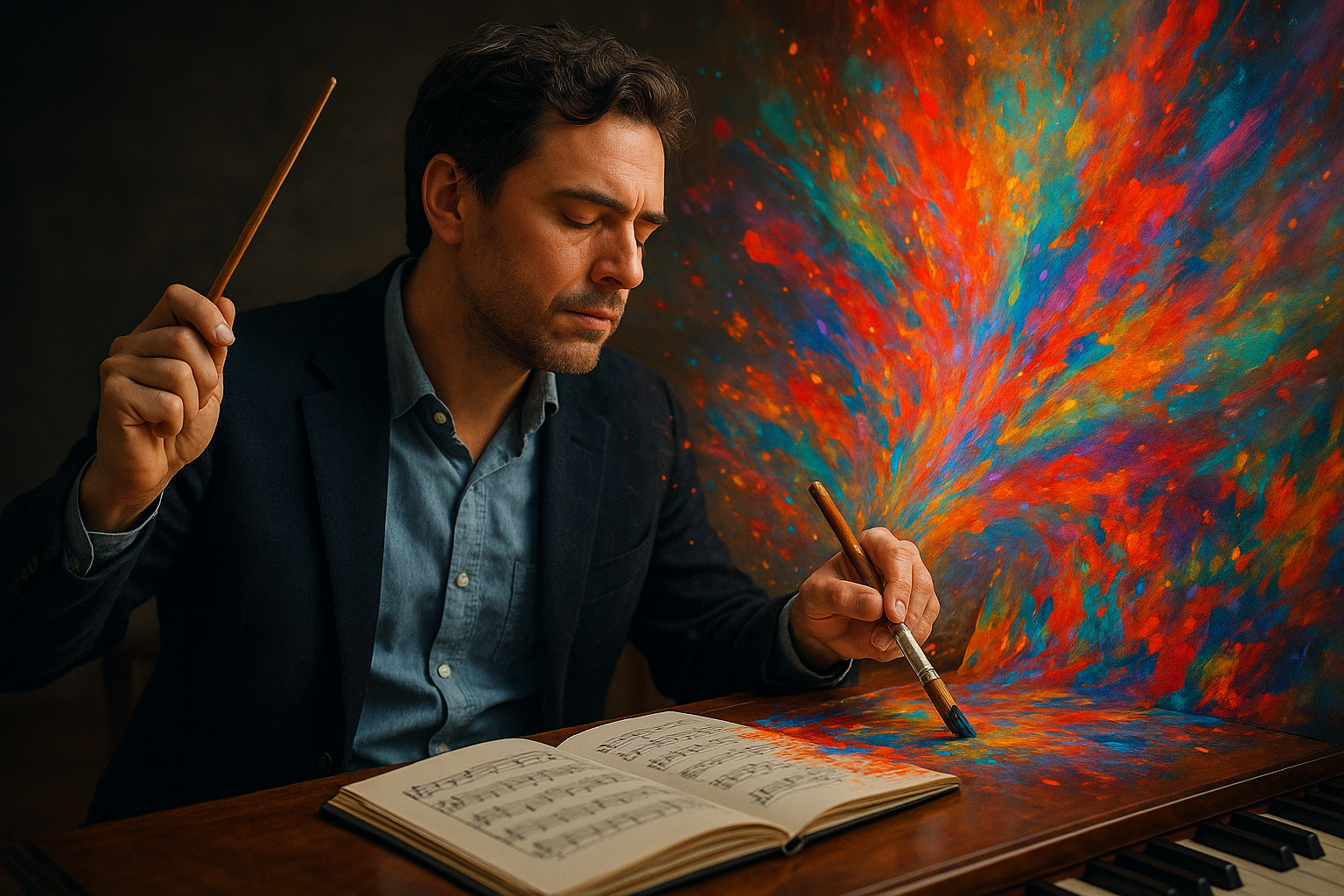Synesthesia in Music: A Sensory Symphony
Introduction: Imagine a world where you can see music and hear colors. Welcome to the fascinating realm of synesthesia in music, an extraordinary sensory experience that melds sound, color, and emotion. Synesthesia is a neurological phenomenon in which stimulation of one sensory pathway leads to involuntary experiences in a second sensory pathway. This rare condition can manifest in various forms, one of the most captivating being music-color synesthesia. This form enables individuals to perceive colors and shapes when they hear music, transforming every melody into a vibrant visual spectacle.

Historical Context: Synesthesia and the Arts
Synesthesia has intrigued artists for centuries. The early 20th-century painter Wassily Kandinsky, believed to be a synesthete, created works that demonstrated his vision of music. His abstract compositions, filled with shapes and colors, were his attempts to paint what he heard. Similarly, composers like Alexander Scriabin and Olivier Messiaen, both synesthetes, composed music that reflected their unique sensory experiences.
Synesthesia in Contemporary Music
Today, synesthesia continues to inspire musicians. Iconic music producer Pharrell Williams and singer-songwriter Billie Eilish, both self-proclaimed synesthetes, attribute their unique sound and creative process to this phenomenon. Williams has often described his songs in terms of color, while Eilish’s debut album, ‘When We All Fall Asleep, Where Do We Go?’ was notably influenced by her synesthetic experiences.
The Impact: Beyond Artistic Expression
The impact of synesthesia goes beyond inspiring artists. It offers insights into the mysteries of human perception and cognition. Studies on synesthesia have led to breakthroughs in understanding brain functions, memory, and creativity. It also broadens our understanding of artistic expression, proving that art isn’t just a matter of personal interpretation but can also be a sensory experience.
The Significance: A New Perspective on Music
Music-color synesthesia offers a unique perspective on music and art. It challenges traditional notions of artistic expression and opens up a universe of sensory possibilities. It’s not just about listening to music—it’s about experiencing it in a way that transcends the usual barriers of perception.
Synesthesia in music not only highlights the boundless potential of the human mind but also redefines the way we perceive and appreciate art. Through exploring this fascinating phenomenon, we can begin to understand the profound connection between our senses and the world of art and music. It’s a reminder that art is not just for the eyes or ears—it’s a multisensory experience that speaks to the soul.




